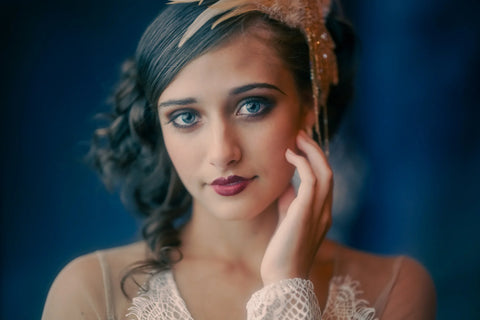Portrait photography may seem easy but it takes more than pressing the shutter button to create a good portrait. The best portrait photographers leverage technical skill and an understanding of human expression to create portraits that tell a story. Looking for tips on how to improve your portraits? Look no further! Check out these tips from some of Sony’s best portrait photographers.

1. Master Lighting Techniques
The most important piece of portrait photography is the lighting. Whether you are using natural light or artificial light, there are ways to take control of your lighting and make it work for you. When using natural lighting, it’s best to shoot just after sunrise or just before sunset. These times of day will provide soft, beautiful golden hour lighting. If you want even more control over your light, artificial light might be the best option for you. Mastering a combination of key lights, fill lights, and backlights will help you add depth and dimension to your images.
Key Light - The key light is the primary and most important light source in a lighting setup. It is used to illuminate the subject and define the overall look of the scene, establishing the shape, dimension, and depth of the subject. The key light is usually the brightest and most directional light in a composition.
Fill Light - The fill light is a softer, supplementary light used to reduce or eliminate shadows caused by the main light source or key light. It "fills" in the darker areas of the scene, making the lighting more balanced. A fill light helps reveal more detail in shaded areas without creating harsh shadows of its own and control the overall mood, depending on how much shadow is retained.
Backlight - Backlighting is a technique where a light source is placed behind the subject, aiming toward the camera. The purpose of this light is to separate the subject from the background, creating more depth and dimension in an image. This light also adds highlights around the hair and shoulders, often referred to as a rim light or hair light.

2. Use The Right Lens
Investing in high quality portrait lenses is a great step toward professional, high quality portraits your clients will love. Portraits should be sharp before post-production and taken with a visually pleasing perspective.
When picking portrait lenses, look for lenses that offer sharp images, bokeh, and good perspective. In general, lenses in the 50mm - 135mm range are great for portraits. Additionally, portrait lenses often offer shallow depth of field. This will help you isolate your subject from the background and really focus in for a pleasing, professional look. Look for lenses with larger apertures like f/1.8, f/1.4, or f/2.8.
Check out Sony’s top portrait lenses!

3. Composition & Framing are Key
Composition, framing and focus can make or break a portrait. The focus of the image should be on your subject’s eye. You can achieve this by carefully balancing composition, exposure, and depth of field. Try putting specific focus on your subject’s eye and then looking at the rest of the frame to make sure that nothing distracts from that. Depending on the portrait or your portrait style, the opposite approach may be better. In this case, look for something you can include in the frame that will draw more attention to what you want to highlight in the image.
Experimenting with different angles and perspectives, like shooting slightly above or below eye level can create interesting effects and emphasize different aspects of your subject’s personality or features. Changing up your compositions will give you options to choose from when deciding which images work best!

4. Engage With Your Subject
Comfortable subjects make for the best portraits and to achieve this communication is key. You want your subjects to be comfortable and expressive with their emotions. Asking them questions about themselves, their family, career or something they’re going through in their life journey can help your subject open up and be more expressive, resulting in more genuine and powerful portraits.
Learning to form a connection between you and your subject is a hugely important skill. Start with casual conversation while guiding them through gentle instructions. Learn to identify body language and expressions while being prepared to make adjustments. Relaxed poses and genuine emotions will take your portraits to the next level.

5. Pay Attention To Details
Even the smallest details can significantly impact your image. From wardrobe, hair, and make up to the expression they’re making in the image, these can all heavily influence the story your portrait tells. All the details in your image work together to form one story or image so pay attention to things like background, distracting items in the background, colors, wardrobe malfunctions, and more. A quick check can save you time in post-production and ensure your images are polished before its time to edit.
